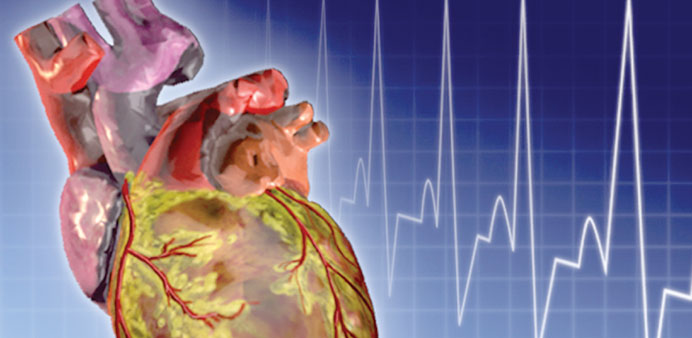By Dr P Raveendran
Worldwide, congenital heart disease week was commemorated in the first week of February. Heart ailments are pretty common in the current times. Congenital heart disease (CHD) is one form that requires early recognition for prompt correction in most of the situations.
What is congenital heart disease?
According to Dr P Raveendran, cardiologist with Aster Plus, Al Hilal: “Congenital means existing from birth. CHD means a birth defect affecting heart and/or major blood vessels arising from the heart. These defects occur because of the faulty development of the embryonic heart in the uterus. The disease may affect approximately 1 out of 100 children. Some of the congenital heart defects may produce symptoms at birth or during childhood or adulthood and some may not produce any symptom at all during life.”
Causes
There are no definite causes of congenital heart disease. But there are many risk factors which might increase the danger of being inflicted with congenital heart diseases which includes:
l Genetic or chromosomal abnormalities such as Down syndrome.
l Certain medications or alcohol or drug abuse by the mother while pregnant.
l Maternal viral infections such as rubella during the first trimester of pregnancy.
l The risk also increases if a parent or a sibling has congenital heart defect.
l The mother having
poorly controlled diabetes or obesity.
l Other maternal diseases like systemic lupus erythematosis.
Signs and symptoms
Some of the CHDs may produce symptoms in infancy which includes respiratory distress, excessive sweating, fatigue, interrupted breast feeding due to breathing difficulty or bluish discolouration. In childhood it may produce easy fatigability, stunted growth or recurrent respiratory infections. Some defects may produce symptoms in adult life only or not at all.
Types
The most common form of the ailment includes:
l Septal defects: Hole in the partition or septa between two of heart chambers.
l Patent Ductus Arteriosus: Failure of the expected closure of a connection between Aorta and Pulmonary artery
l Coarctation of the aorta – localised constriction in the major artery called the aorta.
l Pulmonary or aortic valve stenosis.
l Transposition of the great arteries: The pulmonary and aortic valves and the arteries are connected to have swapped positions.
l Tetralogy of Fallot: The most common type of cyanotic congenital heart disease.
Diagnosis
Congenital heart disease is first detected by a doctor because of presence of an abnormal heart sound, a heart murmur or bluish discolouration (cyanosis). The diagnosis can be confirmed by some investigations which include:
l Echocardiogram (transthoracic or transesophageal).
l Cardiac catheterization.
l Chest X-ray.
l Electrocardiogram (ECG or EKG)
l MRI
“Most of the defects can now be diagnosed by a properly done echocardiography. Some defects can be diagnosed by foetal echocardiography during second trimester when the baby is in the uterus,” adds Dr Raveendran.
Treatments available
Some of the defects are serious enough to warrant treatment in early infancy while some are very mild and may not require treatment at all. Some defects can have spontaneous cure and some defects needs only elective treatment later in childhood or adult life. Some CHDs can be completely cured while only partial correction is possible in others.
The treatment options are medical or surgical.
Nowadays, modern surgical techniques easily restore human heart to normalcy and around 80% of children affected with congenital heart disease will survive into adulthood. In certain cases, medications may be used to temporarily relieve symptoms or stabilise the condition before surgery. Some defects may require multiple staged surgeries.
“With the developments in interventional cardiology techniques, many of the congenital heart defects can be treated with percutaneous interventions, without opening the chest. Patients with some congenital heart defects are at the risk of infection of the heart valve or other structures during certain surgical or dental procedures and may require antibiotic cover during such procedures on the advice of the doctor,” concludes Dr Raveendran.
Dr P Raveendran is a cardiologist at Aster Plus, Al – Hilal



